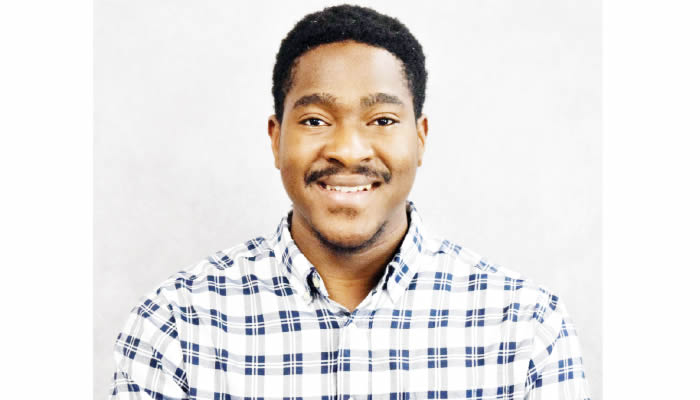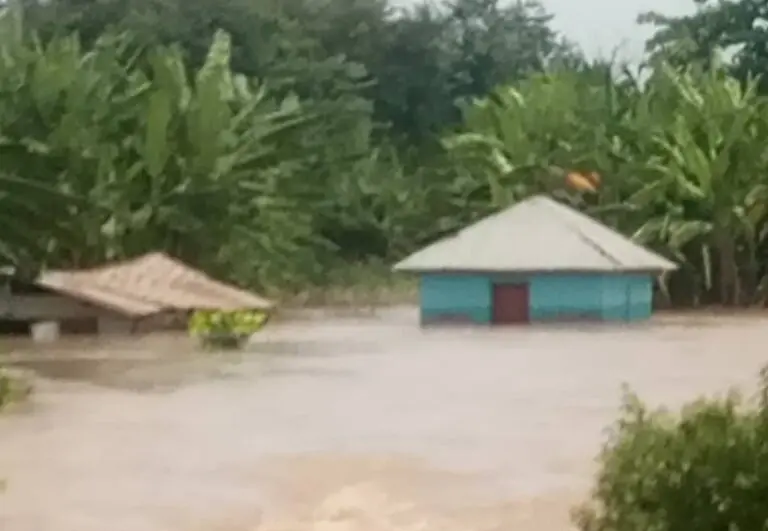Civil Engineering Ph.D. researcher at Clemson University, Kehinde Elelu, explains the use of audio-based wearable technology in addressing construction safety issues in developing countries in this interview with TEMITOPE AINA
Why is there a growing emphasis on wearable audio-based technologies in construction safety, especially in developing countries like Nigeria?
The emphasis stems from the urgent need to reduce high rates of occupational fatalities and to implement cost-effective safety interventions. In countries like Nigeria, where enforcement of safety regulations is often inconsistent and resources are limited, wearable audio-based technologies offer a practical solution. These innovations, powered by machine learning and tailored for local environments, can detect the presence and movement of heavy machinery in noisy construction sites. They provide real-time alerts to workers, enhancing situational awareness and preventing accidents without the need for expensive infrastructure upgrades. This makes them both scalable and accessible for small- to medium-sized contractors, which dominate the construction landscape in developing contexts.
How can your research on construction safety and wearable technology help reduce the high rate of occupational fatalities in developing countries like Nigeria?
The research focuses on the development of low-cost wearable technologies powered by audio-based machine learning systems designed to detect the presence and motion of heavy equipment in noisy construction environments. In countries like Nigeria, where enforcement of safety practices is often inconsistent and resources are limited, these wearables act as an accessible first line of defence for workers. By delivering real-time alerts, particularly for those wearing hearing protection or operating in acoustically chaotic sites, the system helps reduce human-equipment collisions and improve situational awareness. The technology does not require retrofitting equipment with expensive sensors, making it scalable and cost-effective for small to medium-sized contractors, which are prevalent across Nigeria.
In what ways can emerging technologies such as AI and smart sensors be used to close the infrastructure safety gap in Africa?
Emerging technologies such as AI and smart sensors offer proactive risk detection, real-time monitoring, and data-driven decision-making capabilities. AI models can analyse ambient noise, vibration patterns, or thermal signatures to identify potential hazards before they escalate. When deployed through wearable or site-based IoT devices, these technologies provide practical tools for enforcing safety standards in contexts where human supervision may be inconsistent. In African settings, they can address workforce shortages, provide digital audit trails for compliance, and ensure safety in decentralised or remote locations, ultimately helping to democratise access to safety standards and bridge the resource gap.
Given the challenges with enforcement of safety regulations in Nigeria, how can technology-driven solutions support regulatory compliance on construction sites?
Technology introduces essential elements such as transparency, traceability, and automation, which are critical in environments where manual enforcement is unreliable. Wearable devices can log safety violations, near misses, and response times, providing verifiable data for regulators. These logs can aid post-incident investigations and also be used to certify contractor safety performance. Real-time alerts and automated enforcement mechanisms reduce the reliance on site managers. By embedding safety protocols into intelligent systems, enforcement becomes proactive and built-in rather than reactive, offering a model of embedded compliance.
How can your work influence public policy on infrastructure development, especially in high-risk sectors such as road and building construction?
The research provides empirical evidence that affordable, scalable technologies can significantly improve safety outcomes. Policymakers can leverage data from field experiments to mandate or incentivise the use of wearables in government-funded projects. Policy can also prioritise locally developed innovations for safety compliance, particularly those grounded in machine learning and IoT. The success of such systems can support efforts to embed safety as a central consideration in project design and budgeting processes.
What role do you see academic research playing in bridging the disconnect between innovation and real-world application in the Nigerian construction industry?
Academic research must transcend theoretical exploration and directly engage with the real-world challenges facing industries such as construction. For research to make a tangible impact, especially in high-risk sectors like infrastructure development, it must be validated through field applications, not just lab simulations. This means moving from academic theory to practical implementation, following a structured pathway: starting with research, advancing to prototyping, testing innovations on actual construction sites, and refining the technology based on feedback from these real-world environments.
In the Nigerian context, where safety challenges on construction sites are both urgent and widespread, universities have a critical role to play. They can become catalysts for change by embedding applied research in their academic programmes. This involves fostering stronger collaborations between academia and industry, where students and researchers work hand-in-hand with construction firms to identify safety gaps and co-develop context-specific solutions.
Moreover, universities must adopt a translational approach, one that trains engineering and technology students not just to build models or write papers, but to turn their ideas into scalable products and services. This approach equips graduates with the technical, entrepreneurial, and problem-solving skills required to take lab-based innovations to market-ready, deployable tools. In doing so, academic institutions can help close the gap between innovation and application, ultimately contributing to a safer and more productive construction sector.
With limited budgets in many African countries, how can governments and private sector stakeholders adopt affordable safety innovations like yours at scale?
Adoption of cost-effective safety innovations is essential in low-resource settings. The system in focus uses widely available audio sensors and an inexpensive edge computing unit, drastically reducing costs when compared to high-end alternatives. Governments can support adoption through incentives, bulk procurement strategies, and integration of such technologies into public project requirements. Local fabrication and the use of open-source platforms can further drive down costs and ensure necessary localisation for effective deployment.
How can Nigeria build capacity in construction engineering and safety technology to reduce dependence on imported expertise and tools?
Building capacity requires strategic investment in talent development, infrastructure, and innovation ecosystems. Engineering curricula must be revamped to include hands-on learning in IoT, machine learning, and construction robotics. National research funding should be directed at locally relevant safety challenges, and interdisciplinary labs focusing on construction technology should be established within universities. Industry collaboration, internship opportunities, and tech-focused competitions such as hackathons can help produce a new generation of skilled professionals equipped to develop homegrown solutions.
What frameworks would you recommend for integrating smart construction safety systems into national urban development plans?
A three-tiered framework is recommended. First, policy integration is essential, updating building codes and labour laws to mandate digital safety systems. Second, pilot programmes should be implemented in strategic infrastructure projects to evaluate impact and scalability. Third, public-private collaboration should be encouraged, with the establishment of innovation hubs and support for safety tech startups. This integrated approach ensures that adoption of technology is context-sensitive and contributes meaningfully to urban development goals.
How can your work on audio-based sensing contribute to broader disaster risk reduction strategies in infrastructure development?
Audio-based sensing plays a vital role in detecting anomalies such as equipment failure or hazardous conditions. In large-scale projects, continuous acoustic monitoring can function as an early warning system for potential disasters, including structural collapses or machinery malfunctions. Given that sound travels omnidirectionally and rapidly, such systems enable fast hazard detection without the need for a direct visual line of sight. When integrated into broader disaster risk frameworks, audio sensing improves preparedness and enables faster emergency response, especially in resource-constrained settings.
What structural reforms are needed in engineering education and research in Nigeria to encourage more problem-solving innovations like yours?
Structural reforms in engineering education should emphasise design thinking, entrepreneurship, and collaborative research. Support should be increased for student-led innovation, maker labs, and on-site testing of solutions. Accreditation bodies must reward programmes that prioritise real-world impact and outcomes. Grant funding should be directed toward projects with clear implementation paths, while international partnerships must be balanced with a strong focus on addressing locally defined engineering challenges.
How can local startups contribute to advancing safety innovation in Nigeria’s construction sector?
Local startups have the unique advantage of understanding contextual challenges, cultural nuances, and market dynamics. They can rapidly prototype, test, and scale solutions that are tailored to the realities of Nigerian construction sites. By collaborating with academic institutions and industry stakeholders, startups can drive the commercialisation of indigenous technologies. Supportive regulatory environments, access to seed funding, and inclusion in public procurement processes can enable these startups to deliver targeted, affordable, and sustainable safety innovations.
What role do data play in improving safety outcomes on construction sites, especially in countries with limited oversight capacity?
Data serve as the foundation for evidence-based decision-making. On construction sites, real-time data from wearable devices and IoT systems can track patterns of unsafe behaviour, equipment use, and environmental conditions. This data can be aggregated to identify systemic risks, inform training needs, and benchmark safety performance. In contexts with limited regulatory oversight, data-driven insights can empower contractors, project owners, and insurers to self-regulate and improve safety practices proactively.
How can smart safety systems be designed to accommodate informal construction workers who dominate the sector in many African countries?
Smart safety systems must be designed with accessibility, usability, and affordability in mind to serve informal construction workers. This involves creating intuitive interfaces, using local languages, and minimising technical barriers. Battery efficiency, durability, and offline capabilities are critical features. Community-based training and partnerships with trade associations can ensure uptake and sustained use. By targeting the informal workforce, safety systems can achieve broader impact and reduce fatalities where regulation is least enforced.














